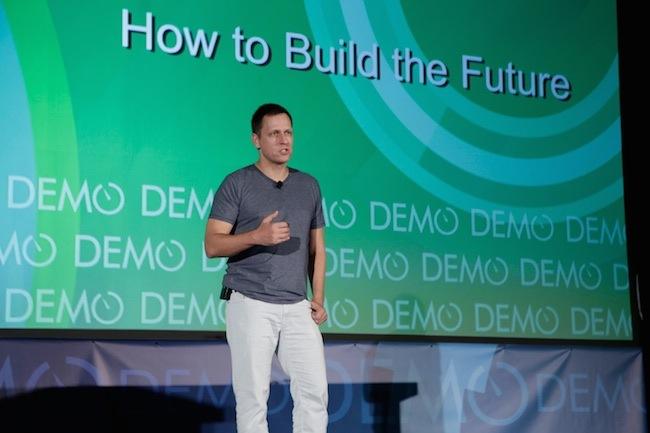Gas Stations Close as Fire Rages Near Alberta Oil Sands


The wildfire that roared through Fort McMurray, Alberta, Canada, last May has been called the worst fire in Canadian history. Its devastation is staggering: More than 100,000 residents and nearby workers were evacuated at different stages of the fire, and more than 2,200 square miles of land and 2,400 structures burned in two provinces: Alberta and its eastern neighbor, Saskatchewan. With the fire only 70 percent contained to date, its economic impact is yet to be tallied.
And the environmental cost of the crisis is expected to be steep as well. According to the Canadian Forest Service, the fire now accounts for 10 percent of Canada's total carbon emissions. A whopping 170 tons of carbon are released into the atmosphere for every hectare of scorched ground in a fire like this, researchers say. By late May, when the fire was still far from contained, that tally had reached 85 million tons of emissions.
But there is another noticeable impact of the fire that's come to the fore in recent weeks, one that is harder to measure by tons and square miles. It's the human impact of losing grip on an industry that has driven northern Alberta's metropolitan growth for decades.
For the last few days, my family and I have been traveling through the the semi-rural farmlands of northern Alberta and British Columbia. Vast tracks of what used to be Canada's northern breadbasket have been transformed to cities and suburbs for the province's oil and gas workers. Rich, black, loamy earth has been torn up and replaced by miles of high-end versions of track housing and commercial services. What used to be a no-man's land of formidable winters and barely traversable roads around Albertan locales like Red Deer and Edmonton is now almost indistinguishable from the sprawling suburbia of more southern cities.
And the lifeline that makes this all possible, of course, is the gas pump.
Last week, Suncor, the parent company of Petro Canada gas stations, announced that it was running out of gas. It blamed the shortage on technical problems and the Fort McMurray fire, which overran an oil sands camp in May and forced the company to evacuate some 8,000 workers. The fire also shut down much of Suncor's access to revenue in some of Canada's most popular summer resort destinations and most profitable city centers. Its commercial loss spans thousands of miles of roads, where both workers and vacationers depend on Alberta's oil sands for gas. Alberta residents, who were already weathering the impact of plummeting oil revenues, feel the effects as well, with further cutbacks in work hours and services and higher costs.
In the resort town of Fernie, British Columbia, more than a day's drive from the fire in Alberta, I spoke to a resident about the closure of his town's Petro Canada gas station. His response mirrored the attitude of many neighboring communities: There are other gas stations. And besides, he told me confidently, the closure would only be temporary. Petro Canada, one of the country's oldest gas distributors, would eventually reopen its stations. He seemed unconcerned about the fact that Fernie's remote mountain location and its ability to thrive as a tourism destination depends on an industry that is, at best, fighting for its life on the outskirts of Canada's largest unchecked wildfire.
Since that time, the network of closed gas stations has grown. Petro Canada stations in some of BC and Alberta's most populous cities have run out of gas. Vacation destinations like the Okanagan Valley, the heart and soul of BC's summer tourism industry, have already been notified of closures.
When I asked my acquaintance in Fernie about whether he thought climate change had a hand in the Fort McMurray fire, he just smiled and shrugged, unwilling to answer. It's a question that is off-limits -- even in a small town that depends on snowfall and healthy forests. Like Alberta's farmers, who live neck-to-neck with the province's oil and gas developments, eastern BC towns share their environmental resources with the province's coal companies. They know that someday that partnership will end. But for now, speaking of environmental disasters in the terms of temporary closures and mitigated losses is easier to handle than considering the reason for a springtime inferno on the outskirts of one of Canada's historically coldest landscapes.
Images: Jan Lee; JasonWoodhead23
In Wake of Gawker Case, Peter Thiel Drags Facebook into White Nationalist Territory


Facebook board member Peter Thiel is facing a firestorm of criticism in the aftermath of revelations that he secretly financed a legal vendetta against Gawker Media. The case has raised a number of corporate social responsibility (CSR) issues, and the intense media scrutiny is beginning to undercut Thiel's carefully-crafted image as a venture capital wizard with a golden touch.
The Gawker case also resulted in a burst of interest in Thiel's attachment to libertarian principles. That includes his position as a key financial backer of Ron Paul's failed bid for the presidential nomination in 2012, his current iteration as a designated delegate for presidential candidate Donald Trump and, most recently, a revelation about his association with a libertarian group connected to the white nationalist movement.
Peter Thiel and the Gawker case
Those of you new to the topic can check the TriplePundit archive for a brief recap of the Gawker case. The backstory is that Thiel has portrayed himself as a white knight, acting in support of privacy rights for people without the means to fight back against media bullies.
As this storyline goes, Thiel is a victim who happens to be wealthy enough to strike back, and his pursuit of Gawker is a philanthropic effort to help deter other media bullies from stepping over the line.
However, more recently the media has focused its attention on evidence that Thiel orchestrated a network of lawsuits aimed at shutting down Gawker not over privacy invasion issues, but because insider reporting by Gawker's Valleywag site was undercutting his selling points as a venture capitalist.
Thiel's efforts came to a successful conclusion in March, and last week, Gawker announced that it would file for Chapter 11 bankruptcy.
However, plenty of other media outlets survived to pick up the story, and the public is now being treated to a regular drum-roll of reasons why Thiel should not have a seat on Facebook's board of directors.
Peter Thiel and white nationalists
In the latest development, on June 9 the Southern Poverty Law Center (SPLC) put out a press release under the title, "PayPal Co-Founder Peter Thiel to Address White Nationalist-Friendly 'Property and Freedom Society' Conference in September."
Thiel will share the platform with Hans-Hermann Hoppe, who founded the Society in 2006. SPLC cites this example of Hoppe's writings on the topic of immigration, in which he wishes for a pre-modern approach to border management:
"... to post signs regarding entrance requirements to the town, and once in town for entering specific pieces of property (no beggars or bums or homeless, but also no Moslems, Hindus, Jews, Catholics, etc.); to kick out those who do not fulfill these requirements as trespassers …”
Also attending the conference (to be held in Bodrum, Turkey) is the head of the U.K.'s Libertarian Alliance, Sean Gabb. Here's the SPLC take on Gabb:
"Gabb has spoken at far-right gatherings in the U.K., such as the Traditional Britain Group and at the H.L. Mencken Club. He often writes for the white nationalist website VDARE, run by English white nationalist Peter Brimelow, who is himself a regular at the Property and Freedom annual gatherings."
SPLC notes that one guest at the Society's 2013 conference was New Century Foundation head Jared Taylor. Here is SPLC's rundown on Taylor:
"Taylor once wrote: 'Blacks and whites are different. When blacks are left entirely to their own devices, Western civilization — any kind of civilization — disappears.'"
According to SPLC, featured speakers at the inaugural meeting of the Society included these guys:
"... Paul Gottfried, the American white nationalist who founded the H.L. Mencken Club, along with Tom Sunic, another white nationalist and an ex-Croatian diplomat who spends his time speaking at racist gatherings on both sides of the Atlantic."
Sunic is also the head of the white nationalist American Freedom Party.
With heroes like these ...
Thiel's association with the international white nationalist movement might come as a shock to the general public, but SPLC points out that his penchant for anti-immigrant talk can be traced straight back from his college days, through to his funding of conservative filmmaker James O'Keefe and on up to the Gawker affair.
Thiel's support for noted libertarian Ron Paul's 2012 presidential nomination bid also raised some eyebrows. Paul's perspective, which associates have called racist, gained him many friends among a web of hate groups, and he is a frequent topic of SPLC coverage.
What should be sending eyebrows through the roof, though, is Thiel's position as a designated delegate to the Republican National Convention for presumptive Republican presidential nominee Donald Trump.
Trump has made attacks on the media part and parcel of his over-the-top campaign. His candidacy has also occasioned a flurry of excitement in the international white nationalist movement, as chronicled in an expansive article published by the American Freedom Party.
Here is the snippet focusing on Sinic, in which he sums up many of the other comments included in the article:
"Tom Sinic, who said that he knows [American white nationalist and former Klansman] David Duke 'very well' and respects 'many things he has to say,' said the term 'white supremacist' is simply used to discredit opponents. Instead, he calls himself a 'cultural pessimist.' He’s confident that a Trump presidency would lead to people currently scared of being labelled fascists for their views to speak more freely."
Mainstream white nationalists aren't the only ones who are excited by Trump's candidacy. SPLC also draws attention to the emerging alt-right movement. Though difficult to define, the movement revolves around white identification issues. SPLC cites this example:
"Many white nationalists who consider themselves part of the Alt-Right are big fans of Thiel and his attack on Gawker, which white nationalists see as part of the 'cucked' mainstream media. On May 31, Milo Yiannopoulos, an editor for Breitbart News, which in the past year has functioned as the media arm of the Alt-Right movement, praised Thiel calling him 'the hero Silicon Valley needed.'”
... Who needs villains?
In the meantime, Facebook certainly isn't doing itself any favors. At the Recode conference earlier this month in California, company COO Sheryl Sandberg strongly endorsed Thiel's right to "think differently than other people" in a June 1 article appearing in Forbes. That phrase certainly gains a new resonance after the June 9 SPLC report.
In the same Forbes interview, Sandberg extolled Thiel's different thinking as a desirable character trait:
“... We have very independent board members with very independent thoughts that they share publicly.”“Those strong people make really good board members because they have strong views, and they’re not afraid to think differently than other people, which has served Facebook well ...”
Sandberg also referred to another controversy this spring, in which Facebook took fire from conservatives for supposedly shutting conservative-friendly news out of its Trending Topics links. The dustup ended with a meeting between the two sides.
The result, Forbes suggests, is that Facebook will be more likely to promote conservative ideas in the future:
“We want the continuing dialogue on what we think makes the platform work for them,” she added, noting that the political figures at the meeting were highly interested in discussing how to best promote their ideas on the platform. “People believe Silicon Valley has a liberal bias, so we understood the concern.”
Stay tuned.
Photo: by by Stephen Brashear (http://www.stephenbrashear.com) via flickr.com, creative commons license.
Gay Men Still Excluded from Donating Blood, Even Following the Orlando Tragedy


In the hours after the massacre at the Pulse nightclub in Orlando that left 49 people dead, hundreds of people across the Florida city -- and thousands across the U.S. -- lined up to donate blood. Americans once again responded quickly to the tragedy, but the community most affected by the worst mass shooting in American history was excluded when it came to donating blood at a time of crisis.
According to U.S. Food and Drug Administration (FDA) rules, men who have had sexual contact with another man in the previous year are not allowed to donate blood.
That policy, which many advocates say counters the advances science has made on blood-screening technologies, excludes gay men from participating in an act of compassion that shows community solidarity and has long been a keystone for companies working to engage their employees on social responsibility.
To its credit, the FDA has nudged somewhat on this issue. The agency’s first policy related to gay men and blood donations back in 1983 imposed a lifetime ban, largely because there were no reliable tests for screening blood for the HIV virus during the apex of the HIV/AIDS crisis. But blood-testing technology has rapidly improved over the years. AABB (formerly the American Association of Blood Banks), America’s Blood Banks and the American Red Cross have long said that a lifetime restriction banning gay men from donating blood is both “medically and scientifically unjustified.”
Since then, the science has improved. But gay rights activists argue that the FDA has not caught up with the times — and allege that homophobia has a part in that ban, even though the FDA finally relented and ended that lifetime restriction last year. While some argue that blood tests prior to transfusions are not foolproof, gay men still cannot donate even if they prove they are HIV-negative. According to one law review article, lifting such a ban will go far in adding to the nation’s blood supplies as well help end a stigma long attached to gay men.
Furthermore, straight people who engage in high-risk sexual activity are not banned from donating blood. And as many upset and enraged people have called out on social media, it was easier for the Florida gunman to buy a gun than for gay men to donate blood, before and after the downtown Orlando massacre. As U.S. Rep. Jared Polis (D-Colo.) pointed out in a written statement on the Orlando shootings, “It is tragic that members of the community who want to give blood to help their friends are unjustifiably prevented from doing so despite the need.”
U.S. policy on blood donations has influenced countries with similar rules, including Australia and the United Kingdom. But others, such as Italy, have replaced those blanket bans with individual risk assessments to gauge whether a person could safely donate blood. Italy’s policy, implemented in 2001, has not resulted in any notable increase in HIV infections, according to a 2013 study. Argentina lifted its ban on blood donations from gay men last year.
The chorus is becoming louder. Whitman-Walker Health, a community center in Washington, D.C., which has long been a leader in providing health care to both the LBGT community and to those afflicted by HIV/AIDS health issues, has insisted that a 30-day waiting period is more realistic.
That message, however, has not resonated with the FDA nor amongst many within Congress.
So while science has made progress, many in the LGBT community believe society still has a long way to go before they are completely accepted by the nation and its institutions. The fact that a gay man cannot donate blood to his own husband shows that the FDA’s policy is illogical and unjustified.
Image credit: Fibonacci Blue
Trump, Self-Described ‘Protector,’ Is More of a Corporate Predator


Donald Trump fancies himself a “protector,” whether he is talking about jobs, terrorism, entitlements or immigration. One of the premises of his campaign is that he can do for America what he accomplished during his 40-year career within the casino and hospitality industry.
But as investigations led by USA Today and the New York Times reveal, buyers who are captivated by his business background should be aware. Trump’s business history is one full of bankruptcies -- as in, ones filed by his suppliers and investors — and unpaid bills. In the end, Trump has served as a worthy protector of only himself, lining his pockets while others lost their shirts. Whether his business involved an alleged real estate seminar scam or his casinos in Atlantic City, Trump showed he is willing to use a bevy of tactics, including relentless litigation, to protect his bottom line at the expense of others.
For a man who insists that he is out to defend the “little guy,” Thursday's USA Today report outlines a long roll-call of contractors and workers who have been nickeled-and-dimed, legally strong-armed or were simply not paid. Some businesses never recovered, such as a third-generation cabinetmaker in Philadelphia that folded after Trump never paid his bill and accused the company of doing work that was of inferior quality — yet asked the firm’s owner to work on future Trump-related projects. Others include servers who worked at multi-day special events and were never paid overtime, despite the fact some worked 20-hour days. When asked to comment about the nonpayment issue, Trump said his organization was unhappy with the work:
“Let’s say that they do a job that’s not good, or a job that they didn’t finish or a job that was way late. I’ll deduct from their contract, absolutely . . . that’s what the country should be doing," Trump told USA Today last week.
But it was not just dishwashers, plumbers, or even the attorneys who represented Trump in court or negotiated settlements for him who suffered financial losses. As a New York Times investigation reveals, Trump often points to his casinos in Atlantic City as to how he became wealthy, and an example of why America would thrive with him as its president. But Fortune Magazine described that record as one made possible by “recklessly piling on debt,” with disastrous results.
One example is the Trump Taj Mahal, which opened in 1990 at the then-astronomical cost of $1 billion. For the most part, Trump arranged to finance the casino with bonds at a high interest rate. Even though the casino was a success in terms of customers and revenues, it filed for Chapter 11 bankruptcy a year later as it struggled with its $817 million of accumulated debt. The same is the case with Trump's other resorts in Atlantic City, as the Times reported he also refinanced other properties with investors' money and shifted personal debt to the casinos, while collecting millions of dollars in salary and bonuses.
And it wasn't only Trump’s Atlantic City casinos that struggled with debt and refinancing. New York City’s Plaza Hotel also went through a bankruptcy reorganization during the early 1990s under his stewardship. Overall, Trump’s affinity for high-risk debt financing, and his success in letting other shareholders take the financial hit when such deals soured, displays a frightening track record. A decade ago, Times’ finance writer Floyd Norris estimated that an individual who invested $10,000 in Trump’s entertainment company in 1995 was left with stock and warrants with an estimated value of only $636 in 2007.
So, would a Trump presidency see a renewal in investment and job creation based on his long career in real estate? Trump’s record is one of many short-term gains, most of which benefited himself. Even if one leaves out the dubious pattern of stalling or refusing payment for fees owed to individual subcontractors, Trump’s abysmal record of corporate governance and belief that fiduciary duties only apply to himself should raise eyebrows as to how he will conduct himself and the federal government if he becomes the 45th president.
Image credit: Gage Skidmore/Flickr
Combining Hip-Hop and Ballet? Viral Video Sours Race Relations


Some Facebook users are up in arms about a new style of ballet that is gaining popularity thanks to a video posted on Só Bailarinos featuring African American girls dancing en pointe to hip-hop. While the overwhelming majority of commenters on the Facebook post made complimentary remarks to the young girls in pointe shoes, the minority of trollers created a social media firestorm.
Amassing more than 8.5 million views since its introduction in mid-May, the video of dancers from the Chicago Multicultural Dance Center combines hip-hop and ballet into a new art form: Hiplet. Homer Bryant, dance legend and teacher at the center, started teaching the style in 2005 and trademarked it four years later. “I stay relevant to what the kids are doing on the street, and my kids are strong enough to do it on pointe,” Bryant told Chicago Magazine.
The girls dancing to Jason Derulo’s “If It Ain’t Love” received mixed reviews, with the negatives coming from traditional ballet fans. “The mainstream ballet world will laugh at them if they pulled this mess in an audition for a REAL ballet academy or company,” wrote one Facebook user, trying to draw a distinction between classical ballet set to Tchaikovsky’s "Nutcracker" and Hiplet set to popular urban music.
With the bit of negativity came an outpour of support for the young girls who impressively tiptoed and danced in a nontraditional style. I, for one, am enthralled and mystified how the girls’ toes support their bodies at all, especially in such an athletic and graceful manner.
Some of the commenters supporting the Hiplet video mentioned that if the girls dancing to hip-hop were white, it would be considered cute and experimental instead of nontraditional and inappropriate. “[The dancers] are extremely strong to be able to do these moves on pointe, and regardless of their skin color, it is a genius way of getting girls to try it,” wrote a supporter on the Internet. “If you like the classics then keep to it, but don’t tear down dancers because it doesn’t fit your mold of what you believe it should ‘look’ like!”
Hiplet actually consumes a very small portion of what the Chicago Multicultural Dance Center does, Bryant said.
“The big blowup is what we’re doing with Hiplet because it’s some black girls on pointe doing what’s not known in the classical ballet world,” Bryant said.
In an interview with Chicago Magazine, Bryant addressed racism within the realm of ballet. He mentioned that, in highly-regarded performing arts schools around the country, black girls are wearing pink tights that drown them out and make them look gray. He called matching the outfit to the girls’ complexion a “psychologically uplifting experience” because they look like themselves when they look into the mirror. He pointed to the European origins and noted that ballerinas used to powder their faces to give off an unnaturally pale look.
Bryant’s downtown Chicago dance studio welcomes 190 students, but he said his target number of pupils would be between 300 and 500. The attention gained from the Facebook video that broke the Internet will likely help promote the cause.
Image credit: Flickr/zaimoku_woodpile
Spanish Political Party Puts Twist on Boring Electoral Catalogs


Reading an almost 200-page political advertisement may not sound like the most entertaining way to spend your time, but Podemos, a Spanish left-wing political party, brought a fresh spin to the otherwise daunting task. In its unique marketing approach, Podemos developed a 192-page Ikea-esque catalog that presents its candidates next to colorful furniture.
By making the program simplified and less intimidating, the party hopes to inspire those who aren’t as politically-savvy. The brightly-colored catalog humanizes its candidates and party supporters by photographing them performing everyday tasks like feeding their fish, playing with their dog, playing chess or reading a book. The photos are complemented with short blurbs and bullets, concisely explaining the party’s stance.
And the party’s stance is catching fire in Spain. Podemos, which is Spanish for “we can,” came into the political sphere in 2014 amid the anti-austerity movement. Spain’s unemployment rate sits at an abysmal 21 percent, but it's actually down from 25 percent when the political party burst onto the scene. With unemployment so high and the government facing threat of a Catalonia secession — a Spanish region which includes Barcelona and accounts for 20 percent of the country’s GDP — Podemos gained loads of support for a freshman party. In Spain’s 2015 general election, it managed 20.6 percent of the vote and 69 seats in the Congress of Deputies, good for third place behind the People’s Party (28.7 percent, 123 seats) and the Spanish Socialist Workers’ Party (22 percent, 90 seats).
The program can be purchased for just over $2 plus shipping. The catalog is split into two sections: The first exemplifying traditional Ikea sections featuring kitchen, bathroom and living room furniture and the second showing the readers cut-and-dry information in a non-spectacular fashion.
“If we want to pursue different objectives, we need to take different measures,” Carolina Bescansa, cofounder of Podemos, said at the program’s presentation.
Photo courtesy of Podemos
Invest In Cheese and Eat it Too at Maker’s Common


By Julie Fahnestock
310. $310,000, that is. That's the amount of money Californians have invested into a Direct Public Offering (DPO) for the soon-to-be eatery/market, Maker's Common. For the last five years, cheese lovers and founders of Mission Cheese and Maker's Common, Sarah Dvorak, Oliver Dameron and Eric Miller, have positioned their first business -- Mission Cheese, a wine and cheese bar in San Francisco -- as a seller of artisan, American cheeses and a hub for feedback and growth for the domestic cheese industry. Ask a few questions and you soon realize that domestic cheese is the product, but the why is empowerment of small-scale producers and the rebirth of a local economy. Enter Maker’s Common and a $600,000 locally-funded DPO.
Featuring America’s best cheese, beer, wine and charcuterie, Maker’s Common “pays homage” to the creators of artisan noshes. It's 70 percent eatery, 30 percent market. Imagine yourself, wineglass in one-hand, shopping basket in the other, as you peruse locally-cured meats and local beers. My favorite upcoming feature of Maker’s Common? Gourmet meals shared with friends around a big table. Dameron gave me a sneak peek at this family-style menu: roast pork loin with fennel pollen, polenta cakes, pea shoots, sweet pea pesto and spinach, and/or milk braised lamb neck with celeriac puree, charred rainbow carrots and broccoli flowers. Even my pescetarian taste buds are watering.
Dvoark, Dameron and Miller secured a space in Downtown Berkeley, California, for Maker’s Common -- just two blocks from the University of California, Berkeley -- last month. With high, airy ceilings and large windows, Dameron says they saw the vision for the Berkeley space as soon as they walked in the door.
“This space was made for Maker’s Common. We immediately felt like this was ours, and we are so excited to start designing,” Dameron says.
The build-out will take about nine months, which will give Dameron and his team enough time to hire 20 new employees and make decisions about how to expand to their purchasing power.
“We love our cheesemakers, and we want to buy more of everything we currently source at Mission Cheese. We want to support to them at a new level, offer new categories, and help food and beverage makers have a sustainable business,” Dameron says.
Nine months also gives Maker’s Common enough time to raise a $600,000 investment. Fully funded by a Direct Public Offering (DPO), Maker’s Common will open its doors through the $1,000+ investments of Californians. Investors receive a guaranteed return of 4 percent per year and their principal investment back in seven years. A year ago, TriplePundit’s editor-In-chief, Jen Boynton, dissected the legitimacy of this community investment model in an interview with Dameron. In the interview, he explained that there is arguably less financial risk in the stock market, perhaps because few of those companies go out of business, but what’s never accounted for with those companies are their social and environmental externalities.
“For the most part, people interested in community investments like this one also care about the health of that community and its economy. In other words, it’s not just about comparing returns and risk side by side. Community investing creates an economic resilience, a defense again the unpredictable crowd psychology (sometimes lunacy) of macroeconomic policy,” Dameron explained.
Risk aversion for investors in Maker’s Common hasn’t been an issue. To date, 114 people have invested $316,750. In order to open their doors in nine months, however, Maker’s Common needs to reach its $600,000 goal. Investment directly funds the build-out, design and grand opening of Maker’s Common. In addition to the 4 percent financial return, founding investors will also receive invites to special investor-only events and field trips; their names engraved on a wall in Maker’s Common; annual reports informing them of the company status and future plans; and special access to the Maker’s Common founder Facebook page.
Where else can you shop, eat, celebrate with family over dinner, support the small-scale artisan AND put money back in your pockets? Mission Cheese and Maker’s Common are two of the special places in this country where you can have your cheese and eat it too.
Californians: Invest into Maker’s Common. Nor-calers and Tourists: Eat at Mission Cheese. Learn why Jen Boynton decided to invest her hard-earned dollars into Maker’s Common.
Julie Fahnestock is the founder and sustainability storyteller of B Storytelling, a content development company dedicated to strategically discovering, creating and telling the stories of for-profit, for-mission companies. She's also teamed up with TriplePundit on a monthly content membership model called the Content Shop. When Julie isn't chronicling the coolest stories from the world's most awesome change agents, she's surfing, snorkeling and loving life in the sun in West Palm Beach, Florida. Contact Julie at julie@bstorytelling.com or @juliefahnestock
How Peter Thiel's Gawker Lawsuit Could Trip Up Facebook


File this one under "T" for The Law of Unintended Consequences: Tech tycoon Peter Thiel is facing a blistering storm of criticism following news that he secretly funded entertainer Hulk Hogan's crippling lawsuit against Gawker Media. The revelations have begun to shatter the billionaire Libertarian's carefully crafted "golden touch" image, and calls are rising for Facebook to oust Thiel for violating corporate ethics.
The ripple effect could undermine Facebook's new push to transition from its social niche into a full-blown global media powerhouse. Let me explain...
The Gawker lawsuit
In the latest development, Gawker filed for bankruptcy on Friday and will be auctioned off, so it looks like Thiel got everything he wished for. On closer examination, though, perhaps we should file this one under "B" for Be Careful What You Wish For.
For those of you new to the topic, last month Peter Thiel, a Paypal co-founder and active Donald Trump supporter, admitted that he secretly put up $10 million to cover legal fees for Hulk Hogan's invasion-of-privacy lawsuit against Gawker.
That part of the story goes back to 2013, after the multi-talented entertainer (real name: Terry Bollea) sued Gawker in federal court over its publication of a sex tape excerpt. A long essay about the public's obsession with sex tapes accompanied the excerpt, and the case was thrown out on First Amendment grounds.
However, Thiel's largess enabled Hogan's attorneys to revive the case on the friendly terrain of Florida state courts, resulting in a catastrophic $140 million settlement in Hogan's favor earlier this year.
Peter Thiel, white knight...
After the news broke that Thiel secretly bankrolled the Gawker case -- with the obvious aim of bringing down the popular online publishing network -- he advanced a kind of corporate social responsibility defense for his choice of where to spend his pocket change.
In a statement to CNN Money published on May 26, Thiel portrayed himself as a champion of the little guy, fighting for privacy rights against media bullies:
"I am proud to have supported Terry Bollea in his successful fight against a bully's gross violation of privacy," Thiel said in a statement to CNNMoney."Gawker, the defendant, built its business on humiliating people for sport," he said. "They routinely relied on an assumption that victims would be too intimidated or disgusted to even attempt redress for clear wrongs. Freedom of the press does not mean freedom to publish sex tapes without consent. I don't think anybody but Gawker would argue otherwise."
... Or, not
In support of the White Knight defense, it's worth noting that coverage of the Thiel vs. Gawker story often brings up a very brief, but very notorious article that appeared in Gawker's now-defunct Valleywag in 2007. The article featured Thiel's sexual preference throughout.
Thiel and others have characterized the article as an outing, a cruel intrusive invasion of privacy by a callous, grossly irresponsible online publication. That forms the root of his motivation to destroy Gawker.
However, more recent coverage indicates that Thiel's defense is a screen for the only other motivation that could top sex.
If you guessed money, run right out and buy yourself a cigar. Thiel's story of personal victimization is beginning to wither, and it is being replaced by the story of a powerful billionaire whose financial track record is not as golden as his public image suggests.
Thiel outed, only it's not what you think
A critical part of that story can be told by the purported cause of Thiel's victim status, Owen Thomas. Currently the business editor of The San Francisco Chronicle, Thomas wrote the 2007 Gawker article that supposedly launched Thiel's self-defined quest for justice.
In an article published last week by the Chronicle, Thomas pinpoints the real root of Thiel's vengeance: Gawker's frequent (and frequently not terribly flattering) coverage of Thiel's business activities. The cumulative effect was to undermine Thiel's carefully crafted "Midas myth," at least to the relatively small, insidery readership of Valleywag:
...Likewise our reporting from deep inside Facebook, where Thiel wielded great influence on a small board of directors, and whose fluctuating valuation as a private company likewise drove the perception of Thiel’s success.Thiel made some good moves — viz. Facebook — and some bad — Clarium’s assets shrank by 90 percent and Thiel quietly moved away from the hedge fund business. I’m sure he would have rather seen less coverage of his failures.
According to Thomas, his 2007 reference to Thiel's sexuality did not cause a particularly dramatic uproar at the time, partly because Thiel was not in "any kind of closet." In addition, after the article appeared a Thiel representative assured him that he had "no issue" with the article.
More to the point, the reference was not gratuitous. It was the central point for a (very) brief thought piece in which Thomas vigorously cheered Thiel's success as an openly gay venture capitalist in a field dominated by the"clubby ranks" of "straight, white males."
Except for the somewhat flammable headline ("Peter Thiel is Totally Gay, People"), Thomas claims that he had no salacious intent:
...In a post where I hailed Thiel, on the basis of his timely and savvy investment in Facebook, as “the smartest venture capitalist in the world,” I asked whether being gay formed part of his identity as an outsider who questioned conventional thinking in business and society...
Such an article in 1957 would have killed Thiel's career. In 2007, not so much. When you read the entire 2007 piece (here's that link again), it is difficult to see how Thomas's intended cheerleading could provide the sole motivator for Thiel's Gawker lawsuit(s).
Follow the money
Our friends over at Forbes Magazine applied Occam's razor to that question, and came up with more evidence that the root of Thiel's motivation is money, not sex (Occam's razor is a philosophical concept that seeks an explanation with the fewest assumptions).
On June 6, Forbes published an article confirming that the Hogan case was just one element in Thiel's efforts to topple Gawker.
The piece, titled "Behind Peter Thiel's Plan To Destroy Gawker," unpacks Thiel's relationship with an attorney named Harder Mirell, who appears have made a career out of suing Gawker:
…Forbes has found at least two other cases–Gawker is currently a defendant in at least a dozen lawsuits–in which Harder Mirell has worked quietly behind the scenes. One involves soliciting plaintiffs in cases that, contrary to Thiel’s claims that he’s defending those who have been wronged by the site, have nothing to do with its journalism.
Do read the full piece for many more details, in which the writers carefully dissect Thiel's "white knight" claims of acting on behalf of the little guy against the media.
How not to act on behalf of the little guy
Ironically, Thiel's professed concern for the little guy is already having the opposite consequence.
On June 10, Gawker announced that it will be filing for Chapter 11 bankruptcy. The top interested buyer, Ziff Davis (now part of J2Global), is already reported to be interested in shutting down at least part of the Gawker network, leaving only the tech-oriented sites Gizmodo, Lifehacker and Kotaku.
In other words, more than a few people are going to lose their jobs, and virtually none of them had anything to do with the 2007 Valleywag article.
The little guy strikes back -- at Facebook
That finally brings us around to the Facebook connection.
Facebook is still dealing with fallout from recent accusations that it suppressed news from conservative sites, which sparked an avalanche of blowback from the right side of the political spectrum. Now the company is taking heat from the left side, spearheaded by the Writers Guild of America, East.
As cited by Guild member Lauren C. Williams in a June 10 article, the Writers Guild has launched a petition calling for Facebook to take action against Thiel:
We call upon Facebook to remove Thiel from its board of directors. A person committed to silencing journalism he doesn’t like should not sit on the board of a company that serves as the portal to digital news for tens of millions of people.
Williams argues that Facebook has begun to transition into a media organization, and that in order to stay competitive, its board members will have to balance their "personal beliefs" against public support.
And the big guys pile on...
The Guild petition follows a torrent of criticism from leading executives in the tech industry and related fields, and especially from the media industry.
The legacy publication Fortune Magazine was one of the first to provide a platform for the argument that Thiel should resign his position at Facebook. On May 31, it published an op-ed by Eleanor Bloxham, CEO of The Value Alliance and Corporate Governance Alliance, under the straightforward title, "Why Facebook Should Ask Peter Thiel to Resign from the Board."
Here is the nut of Bloxham's argument:
...when Thiel decided to fund the lawsuits, as morally challenged as many believe those actions to be, he had a duty to inform Facebook’s board that he had a conflict and would need to step down.That’s because Gawker is a Facebook customer and supplier — and as it turns out, a vocal brand ambassador for the social media company as well...
Do read the full piece for a detailed explanation of the corporate social responsibility issues involved in the case.
This is not the first time that Thiel has been accused of acting in conflict with his Facebook board responsibilities, and doesn't appear that his position is actually threatened -- yet -- but the timing of the Gawker settlement, and the resulting bankruptcy, is not the best look for a company seeking to establish itself in the field of journalism.
Expect to hear less about Thiel's personal life and more about his CSR profile in the weeks to come.
Image credit: Max Warren, Flickr
Over Half Your Potential Employees Seek Strong CSR Commitments


It’s no secret that most millennial professionals today expect more from their employer than simply a paycheck. Don’t be mislead, though — it isn’t just about a great benefits package, either. Employees today are looking for work that has a passion and purpose — with the opportunity to give back.
Corporate social responsibility (CSR) may be a buzzphrase right now, but the growing success and popularity of businesses that have already integrated these types of programs into their mission have proven that work with purpose is not only a pipe dream. It’s something talented professionals are demanding.
Engaging with positive intent
A recent study from Cone Communications presents some extremely persuasive evidence to support the hypothesis that CSR is the business of the future — and it isn’t only for millennials. Ninety-three percent of the study’s participants said working for a company that cares about their individual employees was the type of employer they were looking for.
On top of this high percentage, 64 percent of people want to see causes they care about as part of their normal benefits package. Employees are looking for a company that engages with their personal life in a positive way — whether it’s striving for environmentally-friendly operations or donating to a good cause. Even small steps to ensure decrease in the company's impact on the environment by increasing energy efficiency at the workplace or cutting down paper usage sends out a positive message that people want to hear. People want a workplace that feeds their passion and doesn’t leave them feeling drained at the end of a work day.
CSR actually improves retention and attracts talent
With so many more professionals wanting a larger fulfillment out of their work life, they are also most likely to look longer and harder for the company that has the right fit. A 2012 survey by Net Impact cited that 53 percent of professionals sought employment that made a positive impact, and 72 percent of college seniors preparing to enter the workforce also agreed this point was important to their happiness — both also cited that they would take a pay cut if a company had these qualities.
In the same Cone Communications study, seven in ten individuals also agreed that they would have a greater sense of loyalty to a company that made contributions to the causes they cared about. So, attracting great talent isn’t just about the dollar bills anymore. A contemporary benefits package needs to include solid CSR initiatives. If you want to attract the best, you need to offer the best — and that means different things to millennials and other young professionals.
Gen Xers and millennials continue to dominate the workforce
Young professionals between the ages of 27-44 now make up the largest segment of the workforce, and social and environmental issues have taken center stage, with mature millennials polling at 79 percent and Gen Xers at 68 percent — both numbers significantly higher than the national average of 58 percent.
Often times, companies think the millennial workforce is the only group interested in the development and expansion of CSR. However, the Cone Communications study also highlights that CSR is also a trend young leaders and managers care about as well — and they’re a group that should be included when it comes to CSR initiative considerations.
It’s even more apparent that ‘business as usual’ will not be what these groups of professionals want in the future. With millennials officially taking over half the active workforce by 2020, your company is going to want to get on the CSR train sooner rather than later if you want to remain competitive in the constantly evolving economy. Utilize your experienced management and engage with them as well. CSR isn’t simply just for the entry-level professionals — it’s a way to engage with everyone.
When you implement CSR into your company’s core of operation, you’ll have happier and more excited employees, even at the management level. This will ultimately lead to greater productivity and talent retention, not to mention actively helping make the world a better place. No matter how you look at it, CSR is a win/win for your company.
Image credit: Pexels/ Tim Gouw
With Bridges Burned Elsewhere, Uber Looks to Africa for Opportunity


Investors want to see more results from Uber than its wildly overinflated valuation. But the company is facing its share of challenges, from Austin telling the ridesharing company it could leave town to the increasing angst felt by its drivers across the U.S. The company is trying to develop new revenue streams from delivering Walmart groceries to boosting a subprime automobile leasing program for drivers with bad credit.
But there is one market where Uber is eyeing virgin territory and sees potential: Africa.
Uber is already in 10 sub-Saharan African cities, including Abuja, Kampala, Lagos and additional markets in Kenya and South Africa. It first launched in Johannesburg in 2012, and opened in new markets this year. And the company is just not looking to move passengers across cities, but to deliver goods as well. This weekend, Uber launched in Accra, where it promised users free rides from Thursday until yesterday so that they could become familiar with the service. Its newest market, Dar es Salaam, will gain Uber service by the end of this month.
But establishing a market in Africa has been a challenge for Uber. As The Guardian outlined this spring, Uber drivers have been subjected to protests and even violence in Nairobi. Its reception in other cities have been more muted, generally because it is seen more as a niche service rather than one that has overtaken other forms of transportation.
Part of Uber’s acceptance in Africa, or at least the minimal outrage, is because Uber has been more flexible over how its drivers can be paid. For example, as TechCruch writer Jake Bright has pointed out, Uber is testing the option for passengers to pay in cash instead of through its smartphone app. The company also lets users pay its fares through the regional mobile payment services that have become the preferred means of financial transactions for many Africans. In addition, public transportation is often inadequate in the continent’s largest cities, and mapping software also faces challenges by these cities’ rapid development. The company ended up ditching Google Maps and partnered with a Kenyan startup, Okhi, which combines GPS coordinates with photos in order to help drivers find their customers as well as locations.
So can Uber add to Africa’s growing social enterprise culture, allowing commuters to move across town more easily while at the same time, help create new economic opportunities for citizens? Or is this company just going to expand its reputation as a corporate bully that exploits workers and views suggested regulations to improve safety with disdain?
It may not matter as one African technology company will soon launch a service that could give Uber a run for its money. Safaricom, which operates the world’s largest mobile payment service, M-PESA, announced to Reuters that it has a service that could be a net benefit for drivers and passengers. Named “Littlecabs,” this service will use M-PESA’s platform to match cars with commuters in Kenya. M-PESA already has 20 million customers throughout Kenya, and the company says it will provide drivers WiFi while saying payment for rides will be seamless for all users involved.
Estimates over its size vary, but the truth is that Africa has a growing middle class that could offer a huge opportunity for Uber and its competitors. If Uber does not further its reputation as a corporate bully, the company could have a hand at helping these cities with their choking traffic as well.
Image credit: Núcleo Editorial